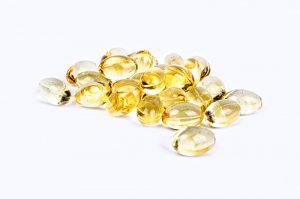Vitamin D replacement therapy successful for fibromyalgia?
Fibromyalgia is a painful and debilitating condition that physicians often have trouble treating. This article studied Vitamin D supplementation in 38 people. They supplemented with 50 000 IU (international units) of vitamin D per week for three months. There was a significant improvement in muscle pain, levels of depression and quality of life. Before undertaking vitamin D supplementation, consult your physician.
The Research
Efficacy of vitamin D replacement therapy on patients with chronic nonspecific widespread musculoskeletal pain with vitamin D deficiency.
Yilmaz R1, Salli A2, Cingoz HT3, Kucuksen S2, Ugurlu H2.
- 1Department of Physical Medicine and Rehabilitation, Yoncali Physical Medicine and Rehabilitation Hospital, Kutahya, Turkey.
- 2Department of Physical Medicine and Rehabilitation, Meram Medical School, Necmettin Erbakan University, Konya, Turkey.
- 3Department of Physical Medicine and Rehabilitation, Seydisehir State Hospital, Konya, Turkey.
Abstract
Aim:
The objective of this study is the evaluation of the effect of vitamin D replacement treatment on musculoskeletal symptoms and quality of life in patients with chronic widespread musculoskeletal pain (CWP) including fibromyalgia (FM) and vitamin D deficiency.
Method:
Patients with nonspecific CWP and vitamin D deficiency (25-OH D3 < 25 ng/mL) were included into the study. Replacement treatments of 50 000 IU/week oral vitamin D3 for 3 months were given to the patients. Patients were assessed pre- and post-treatment in terms of serum levels of Ca, P, alkaline phosphatase, 25-OH D3, severity of pain (visual analogue scale [VAS]-pain), severity of asthenia (VAS-asthenia), Beck Depression Inventory (BDI), quality of life scale (Short Form [SF]-36), tender point count (TPC), severity of waking unrefreshed, headache, tenderness on tibia, meeting the criteria of FM, and level of patient satisfaction.
Results:
Fifty-eight patients with a mean age of 36.9 ± 9.2 years were included into the study. 25-OH D3 levels of patients elevated from 10.6 ± 5.1 ng/mL to 46.5 ± 24.0 ng/mL after replacement treatment (P < 0.001). Marked decrease in VAS-pain, VAS-asthenia, severity of waking unrefreshed, TPC, and BDI and an evident increase in subgroups of SF-36 were established in patients after treatment (P < 0.001). The number of FM+ patients was 30 (52%) before treatment and regressed to 20 (34%) after treatment (P = 0.013); 85% of patients stated satisfaction with the treatment.
Conclusions:
Vitamin D replacement treatment in patients with nonspecific CWP has provided improvements in musculoskeletal symptoms, level of depression and quality of life of patients. Patients with CWP should be investigated for vitamin D deficiency.
© 2016 Asia Pacific League of Associations for Rheumatology and John Wiley & Sons Australia, Ltd.












